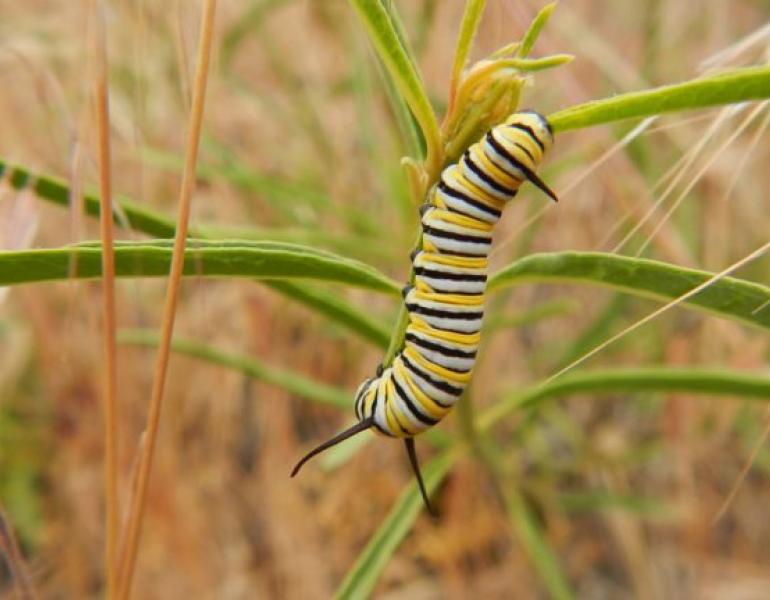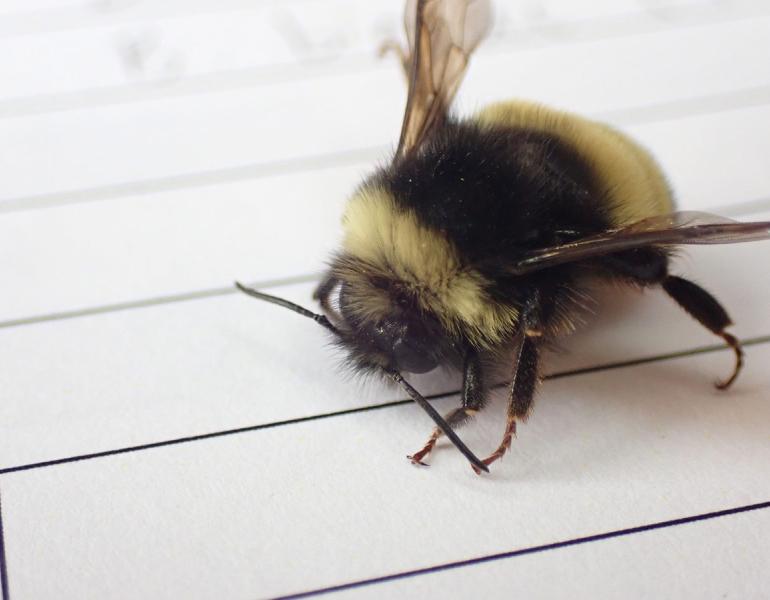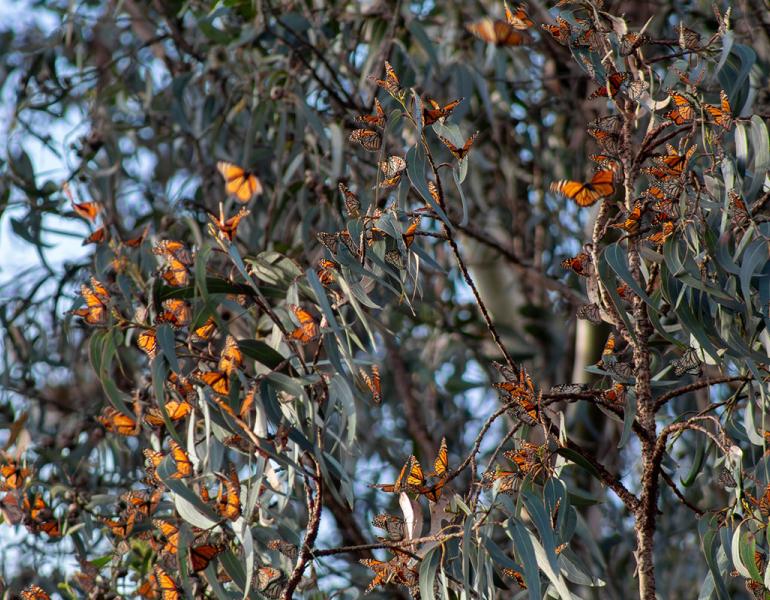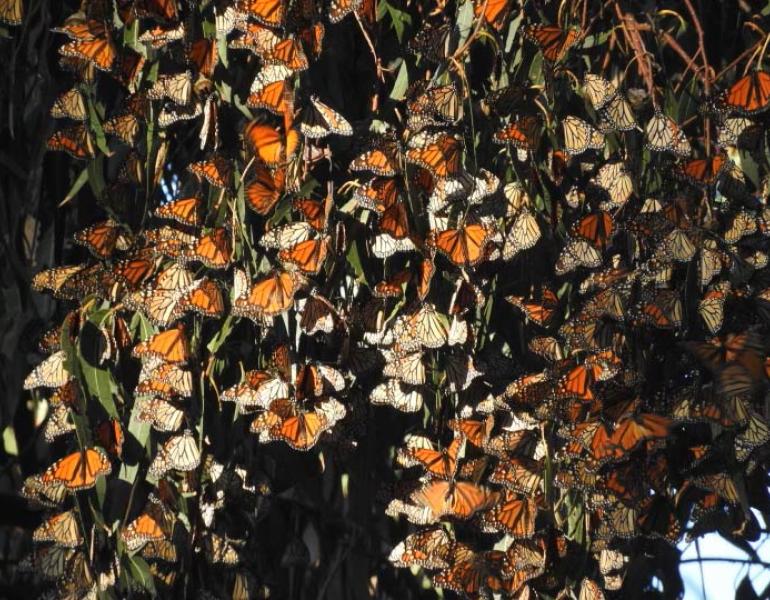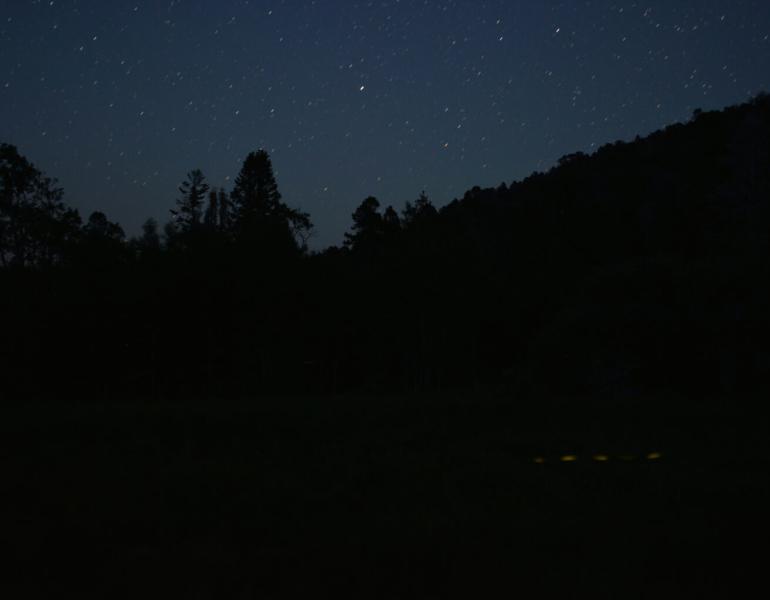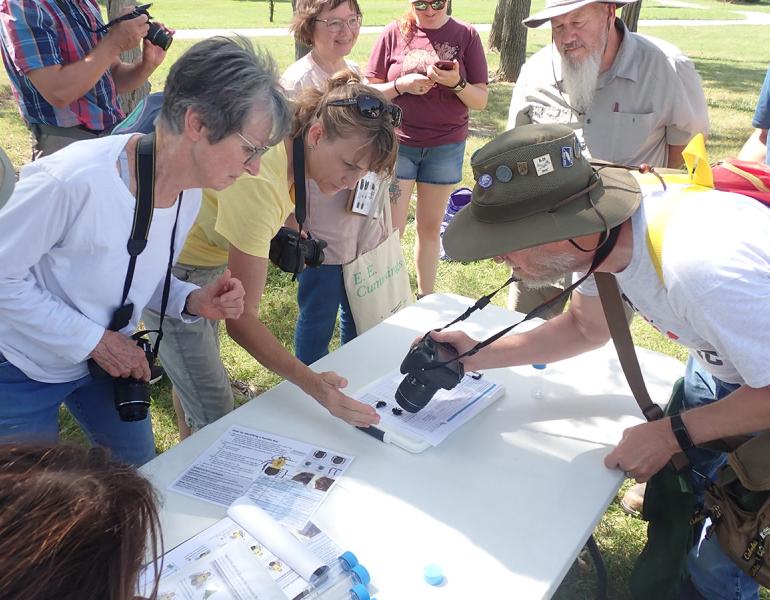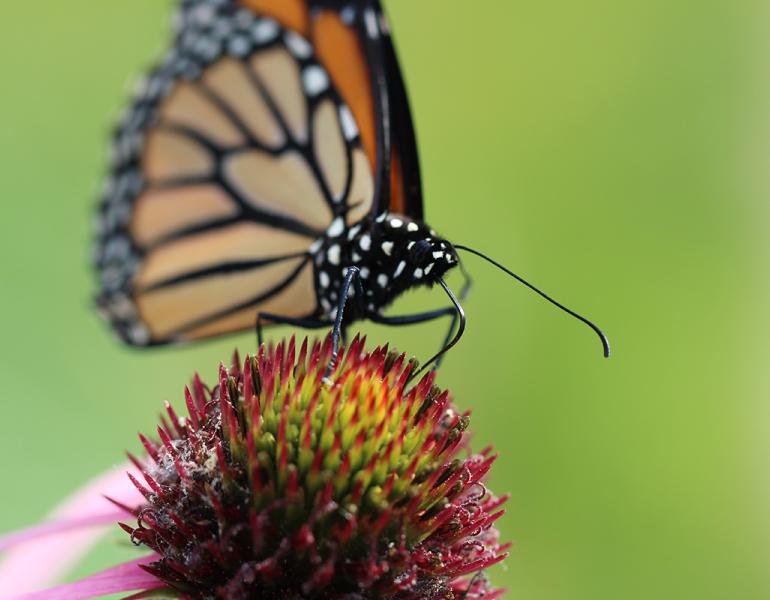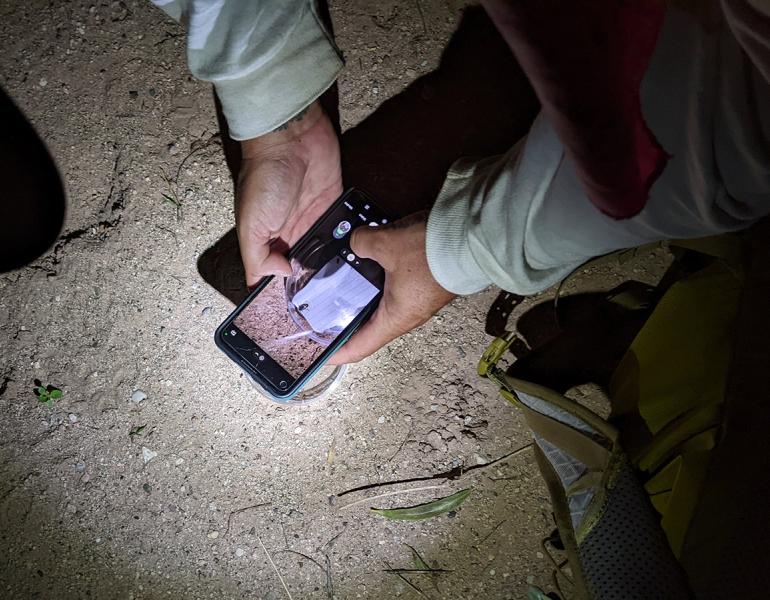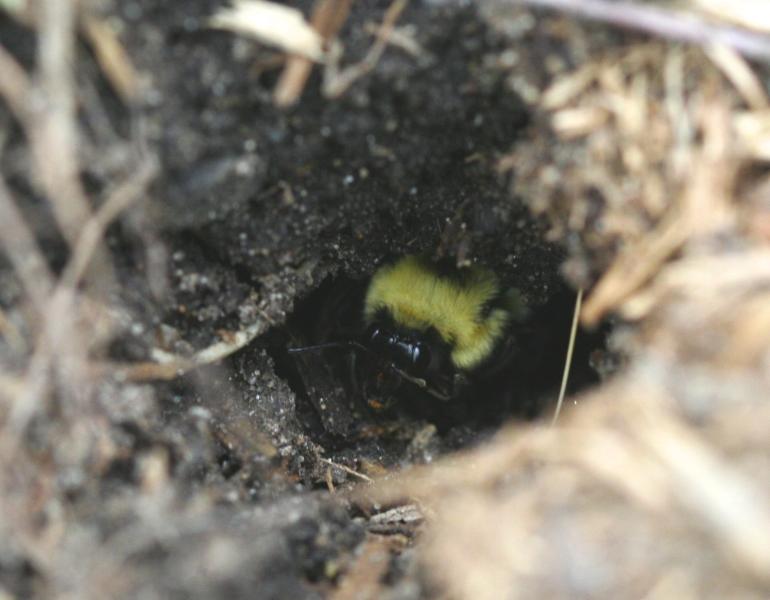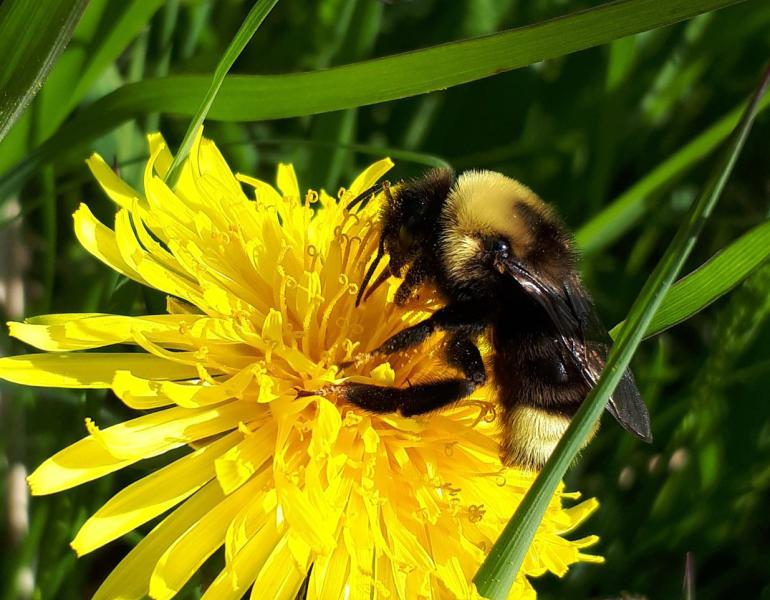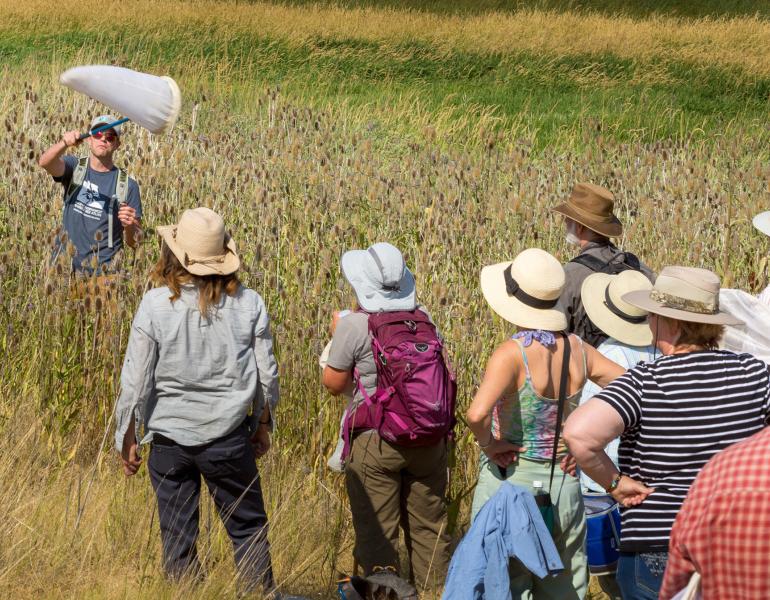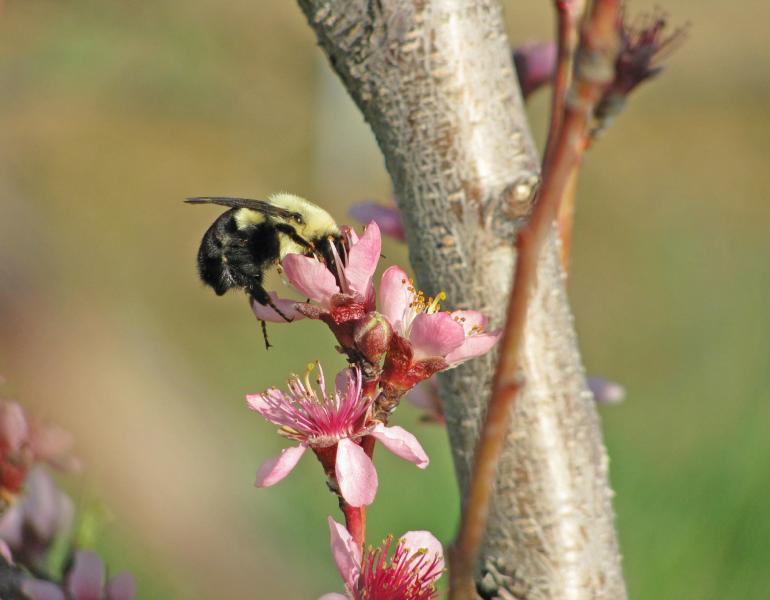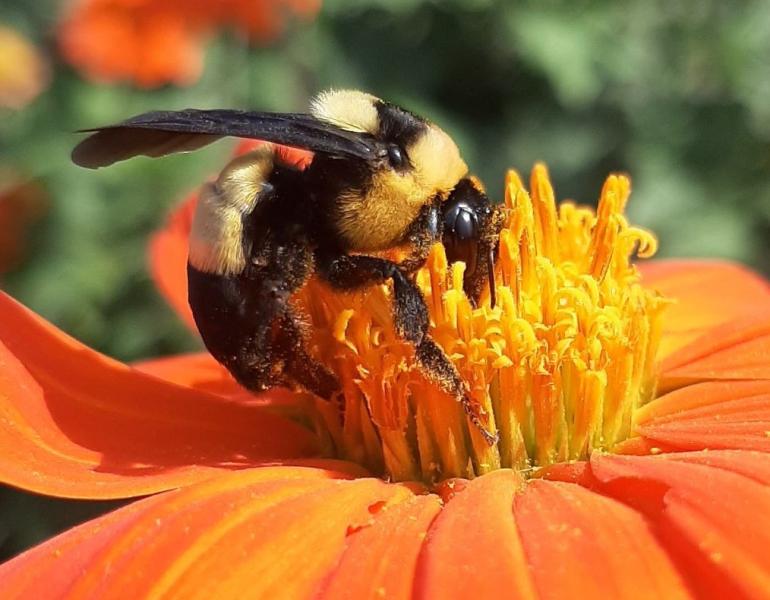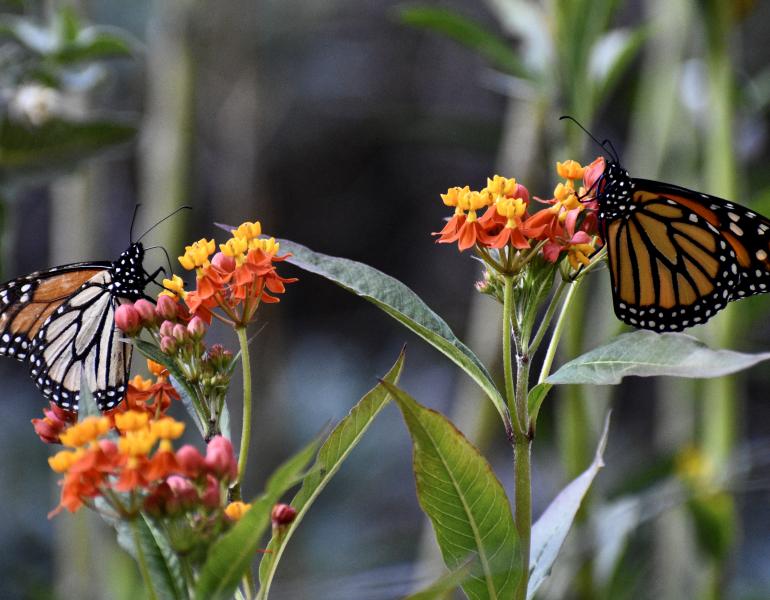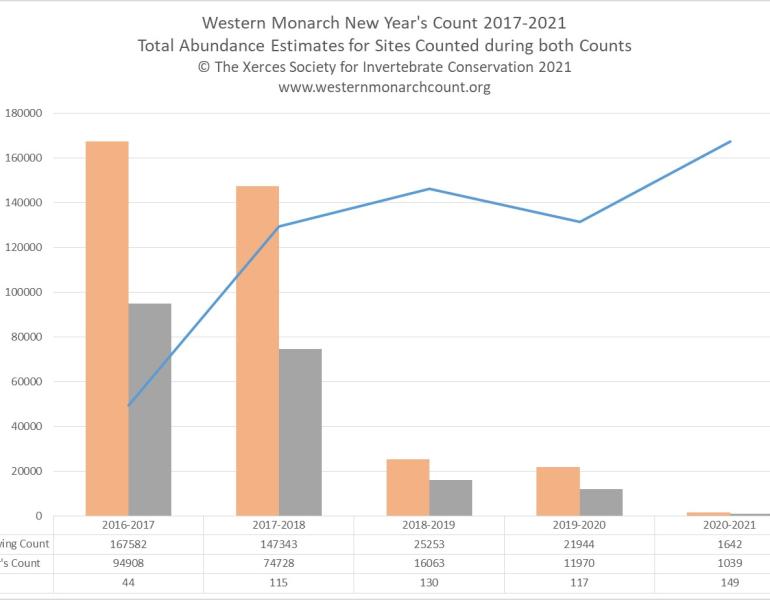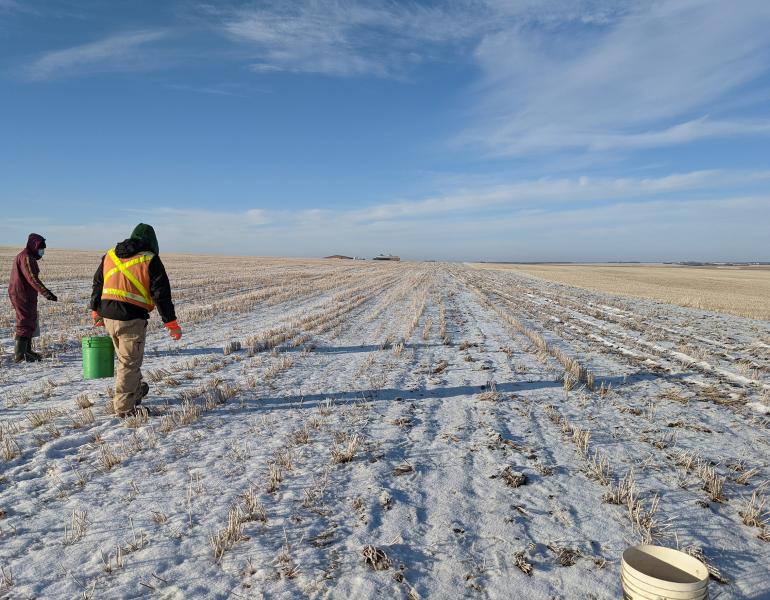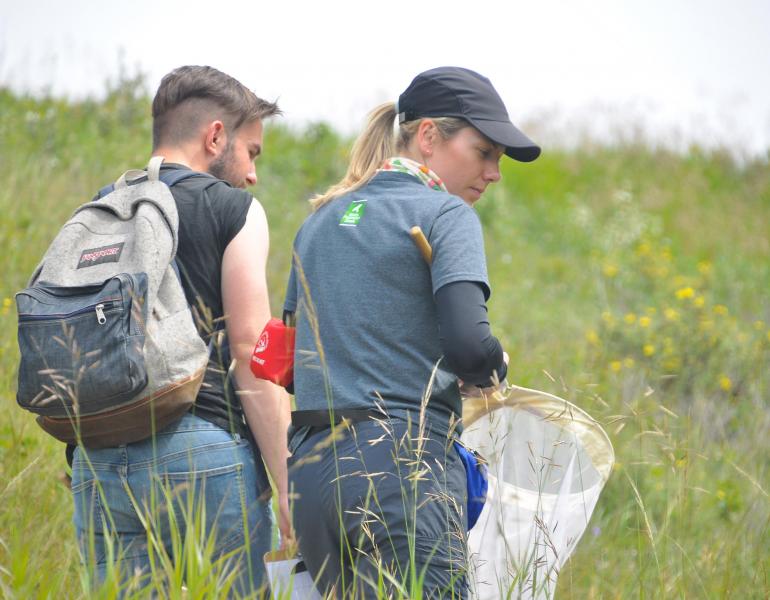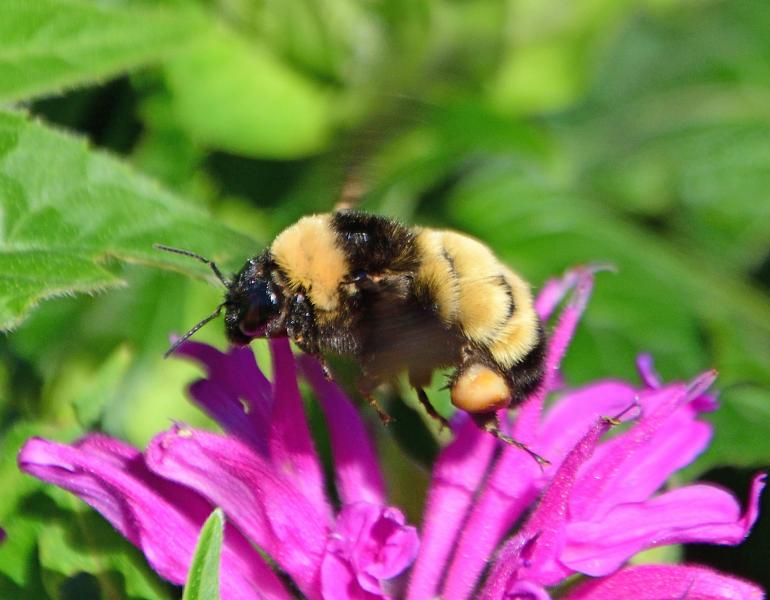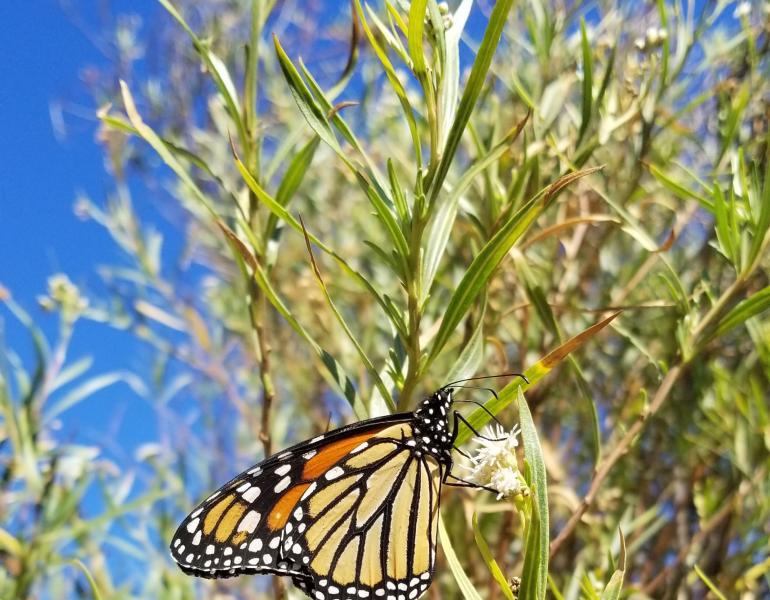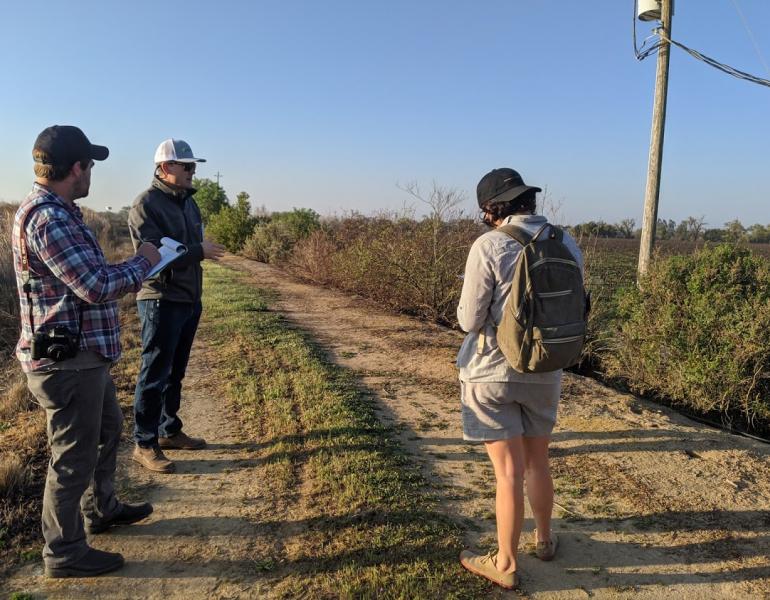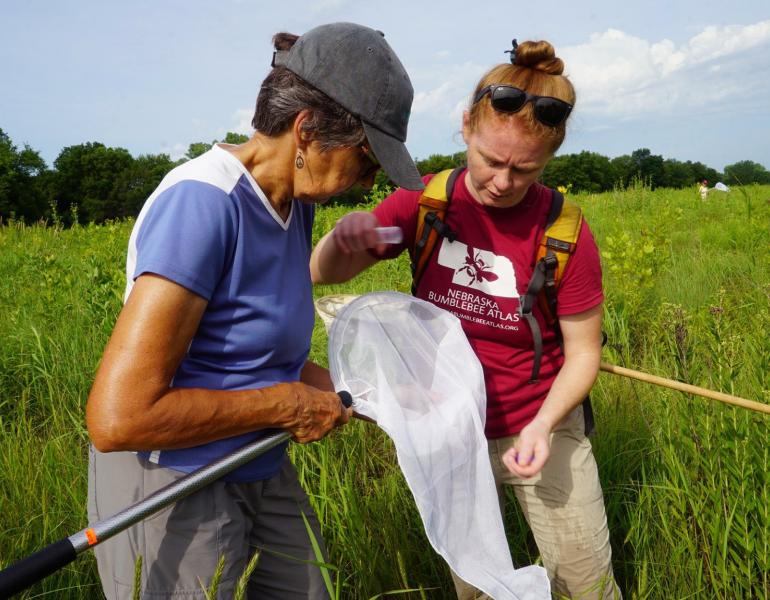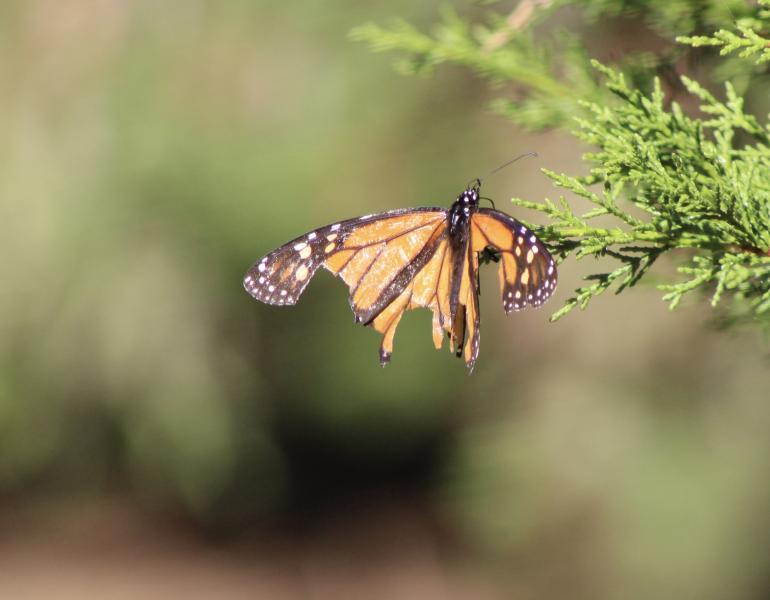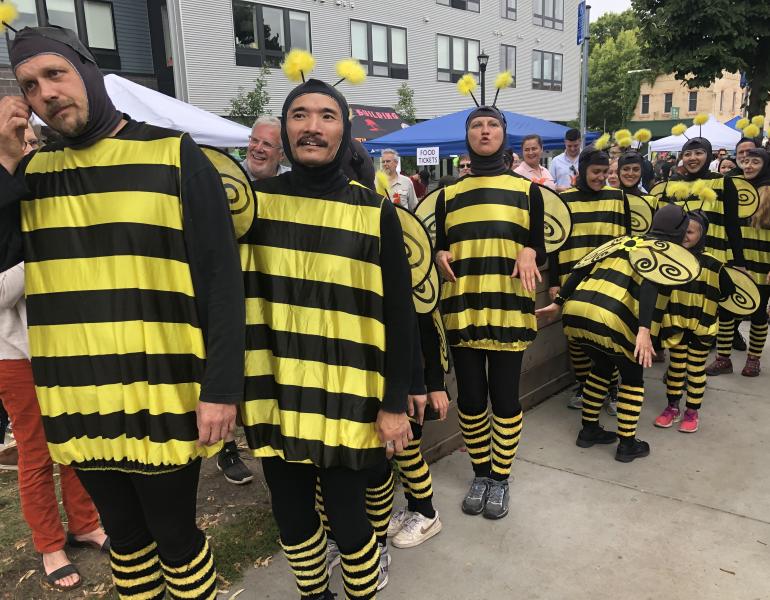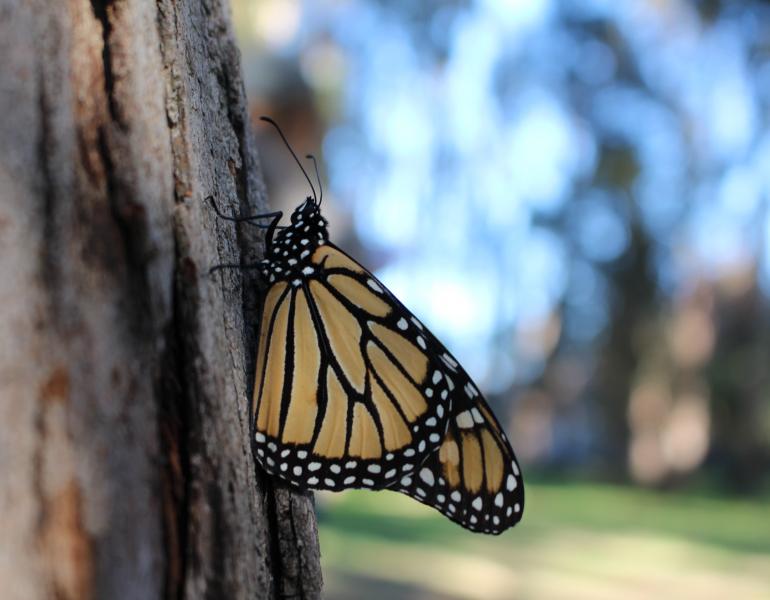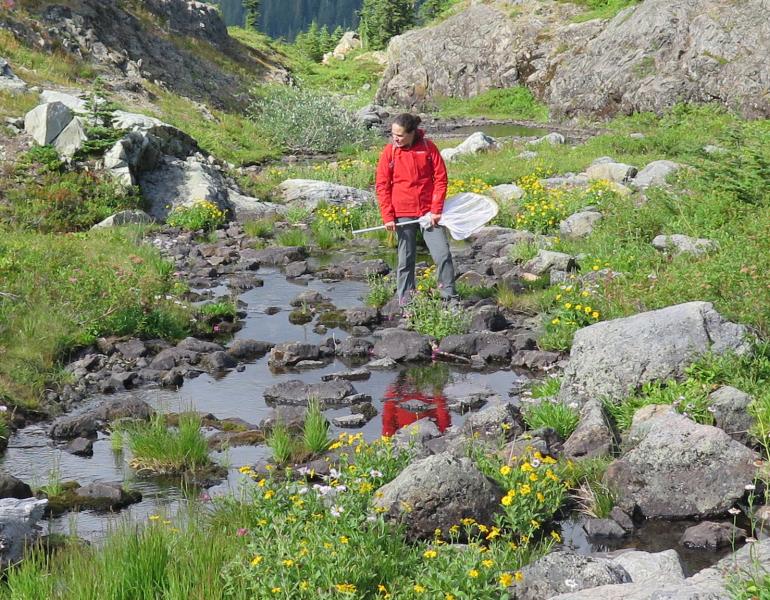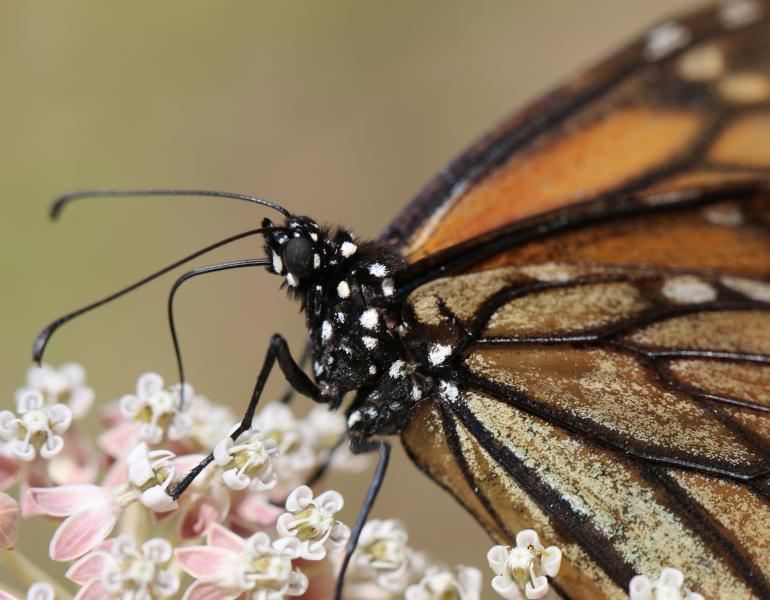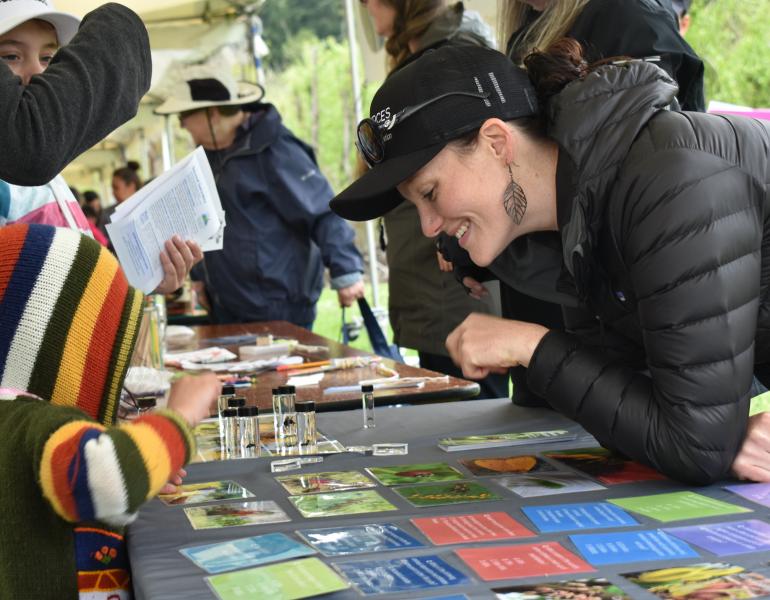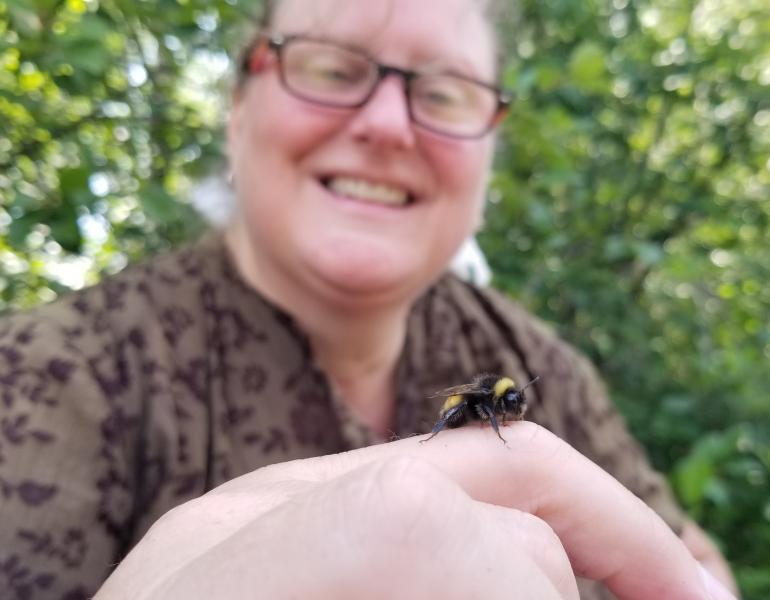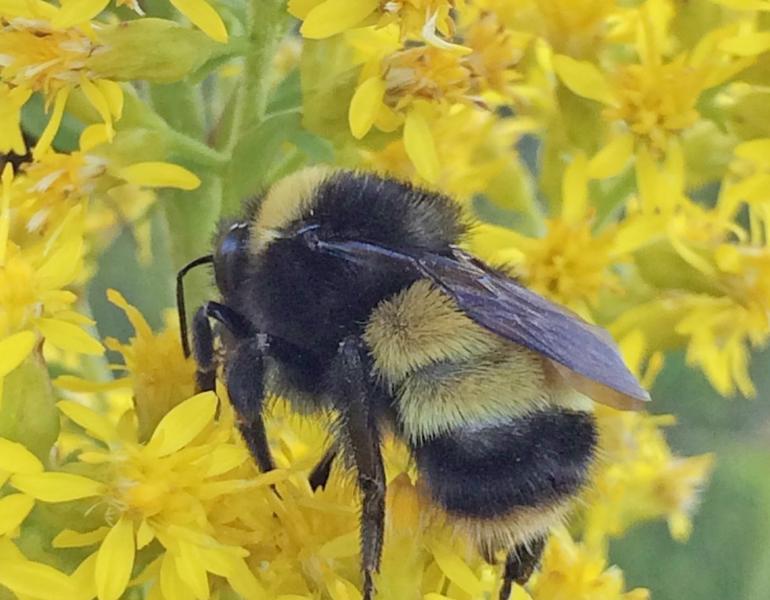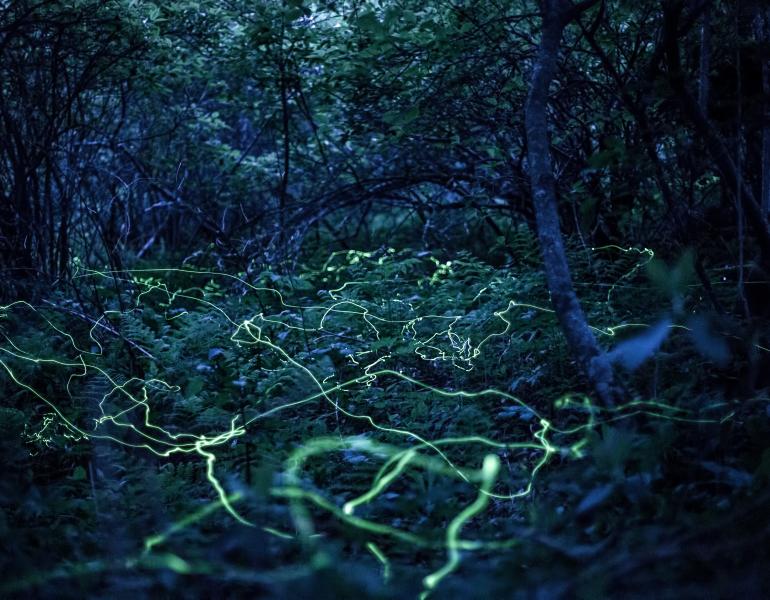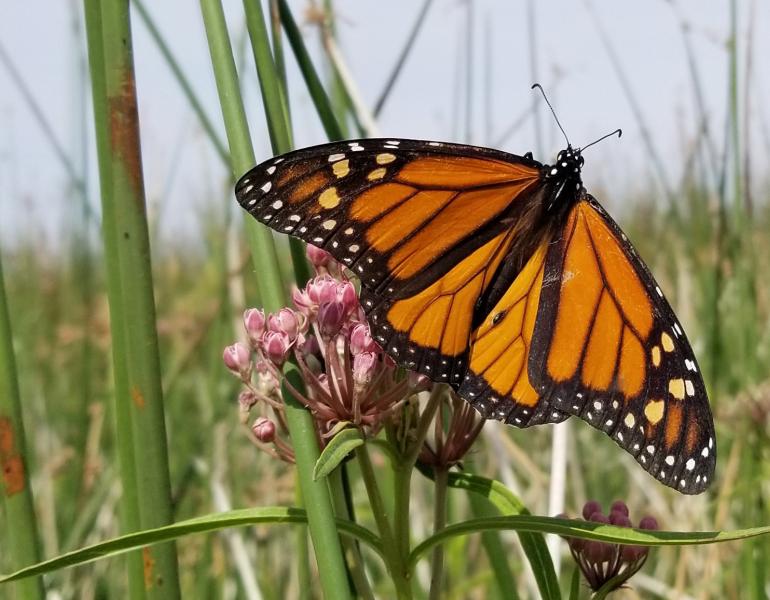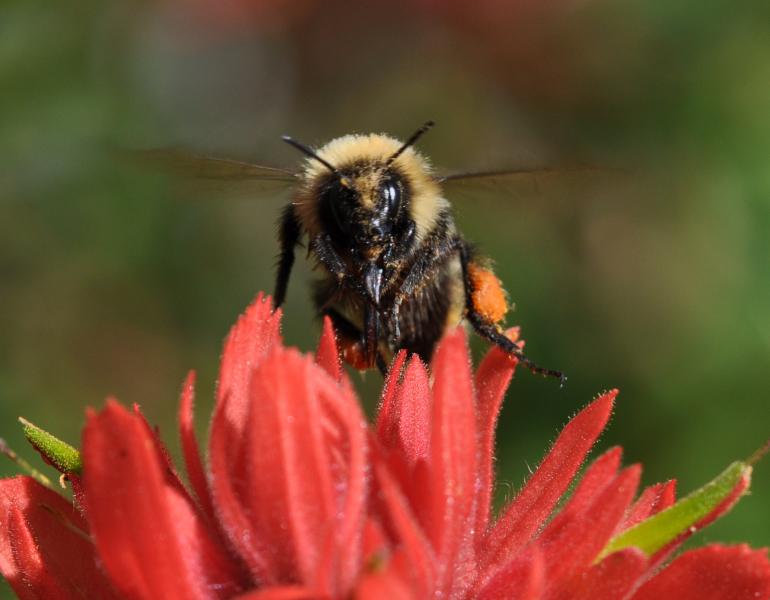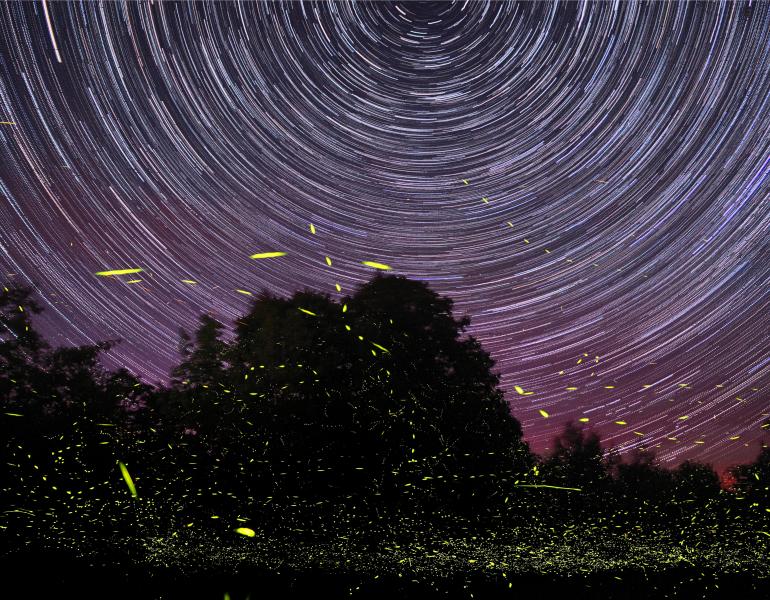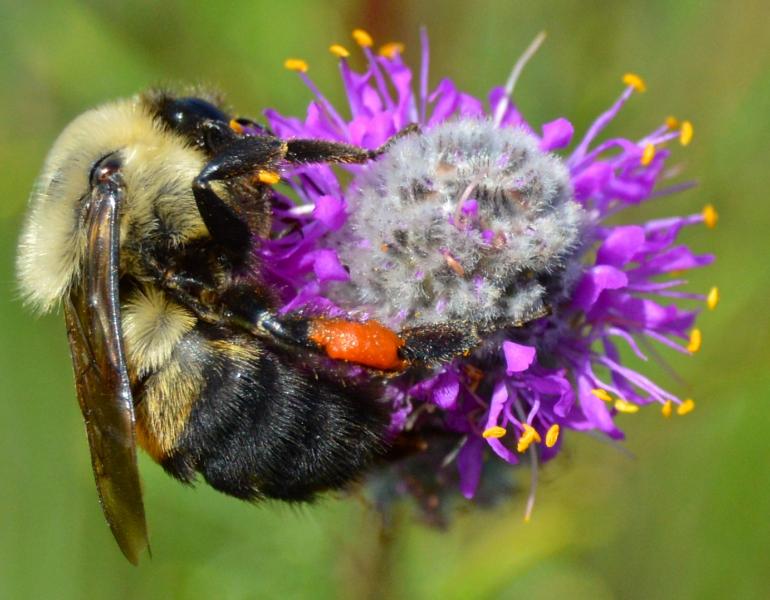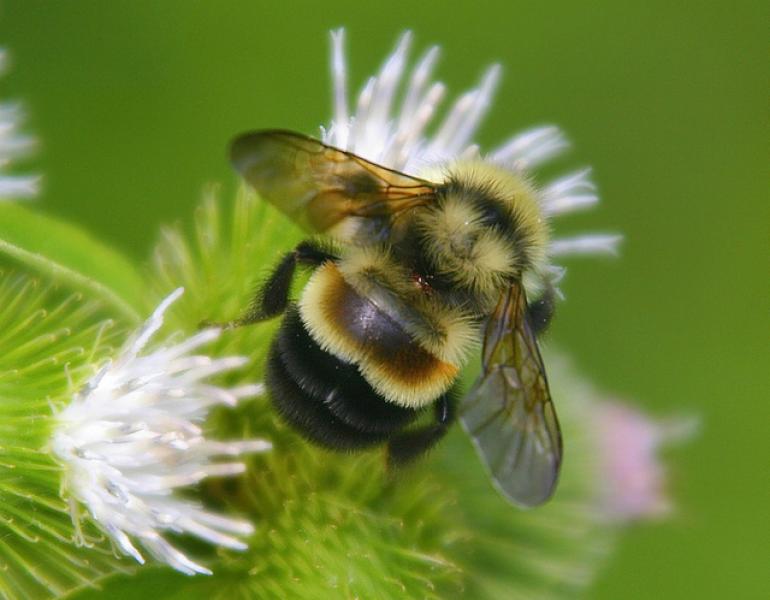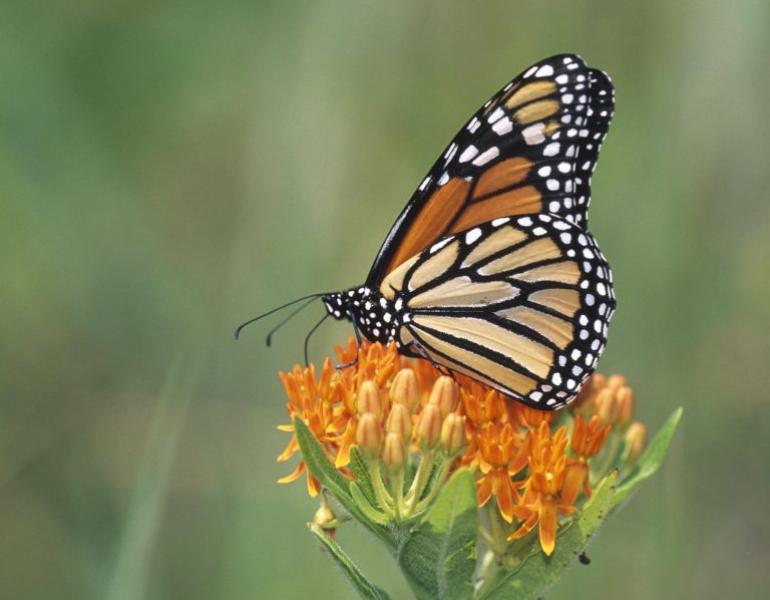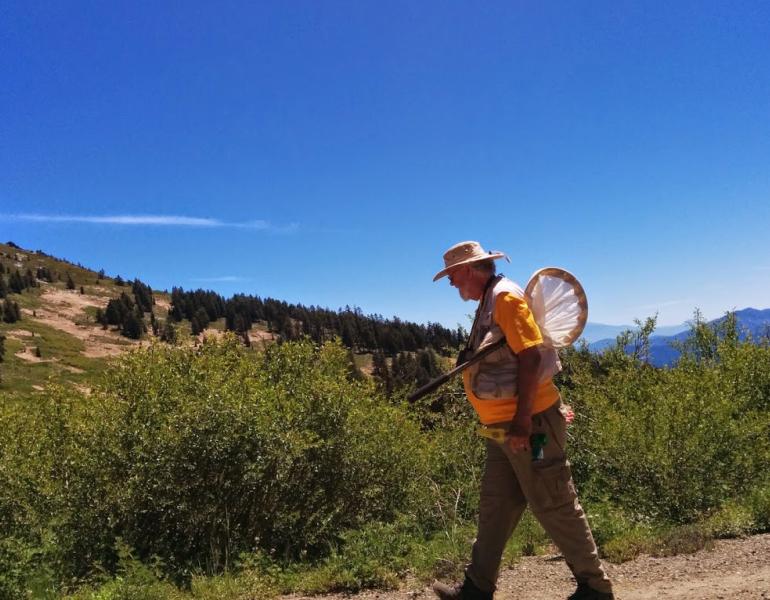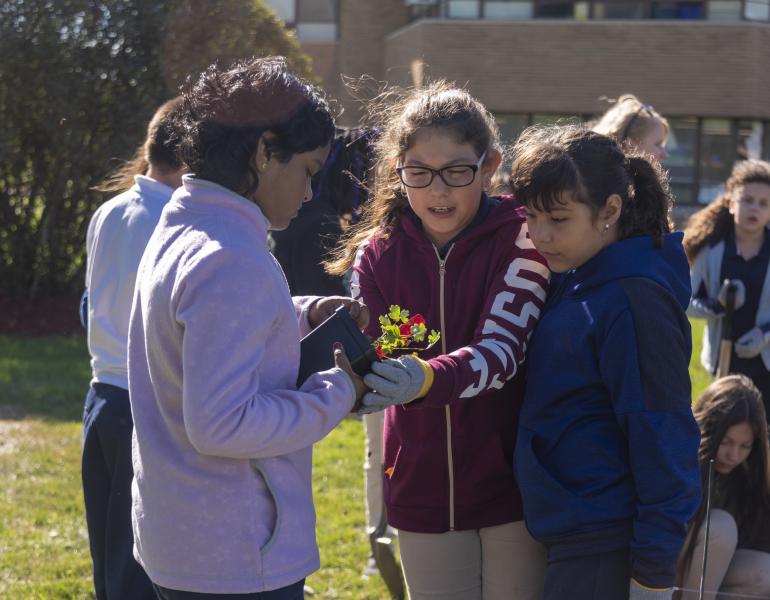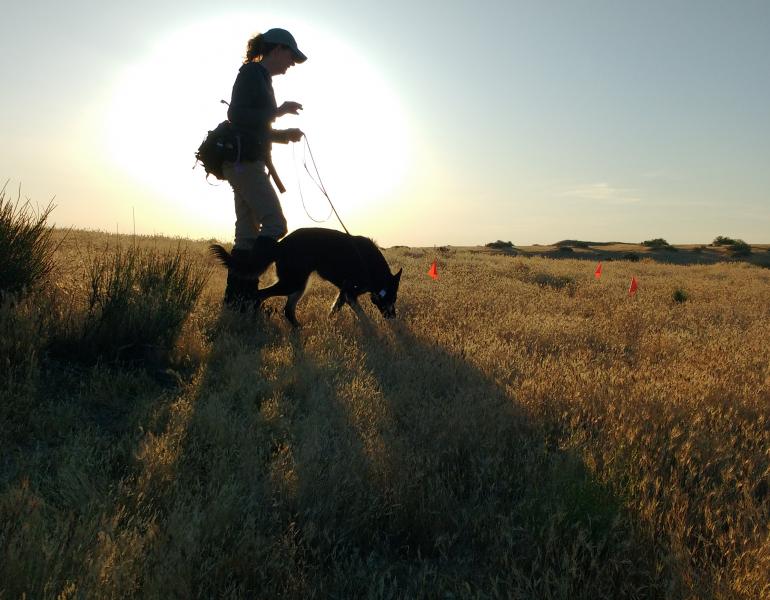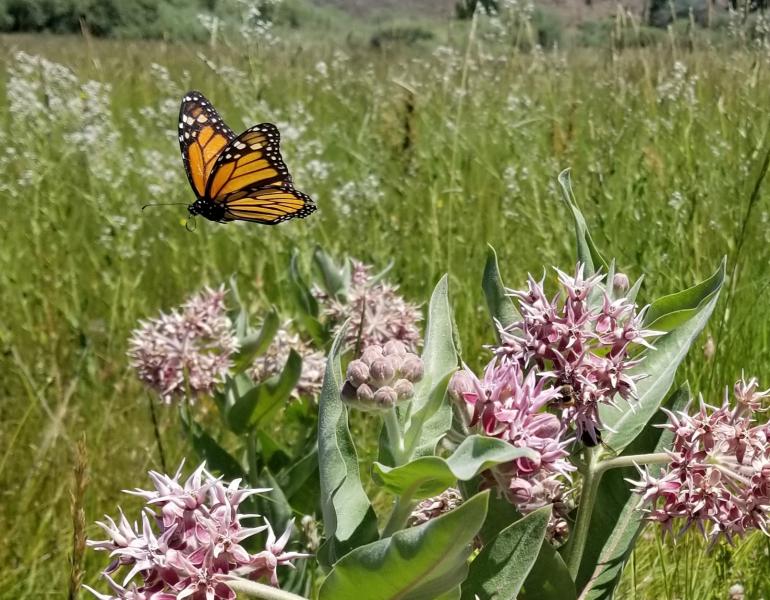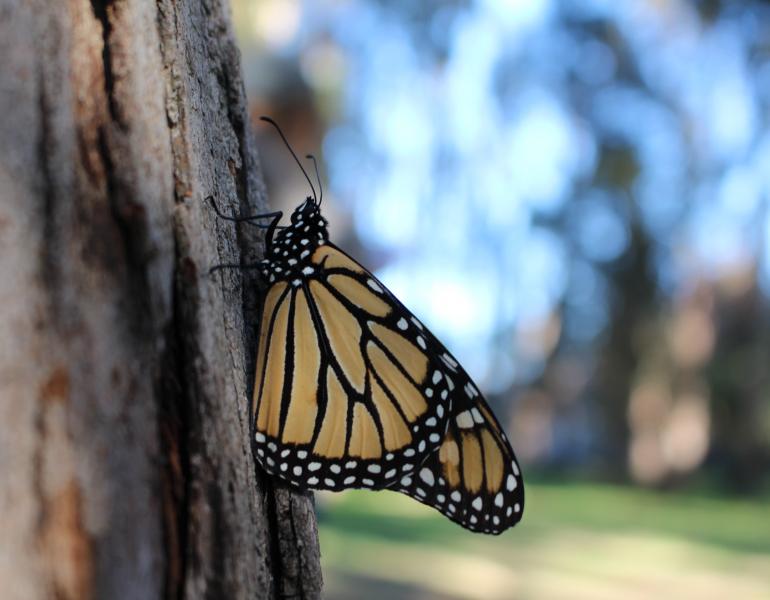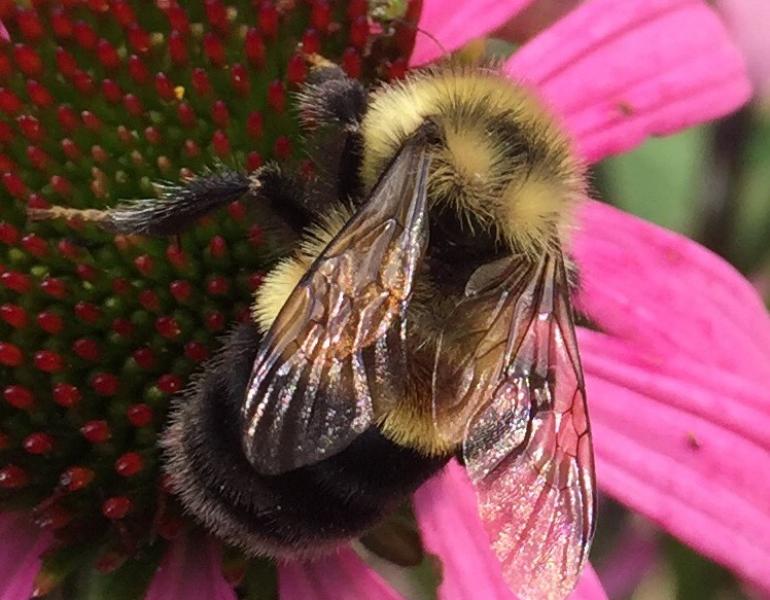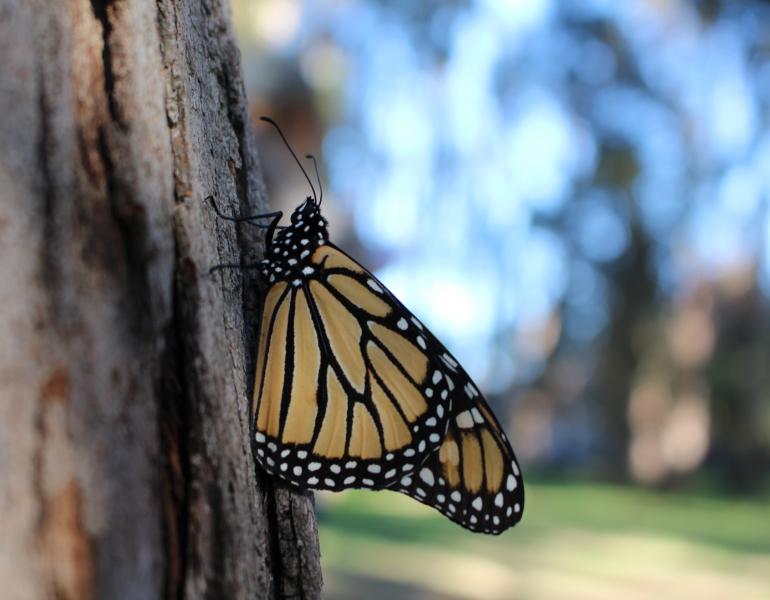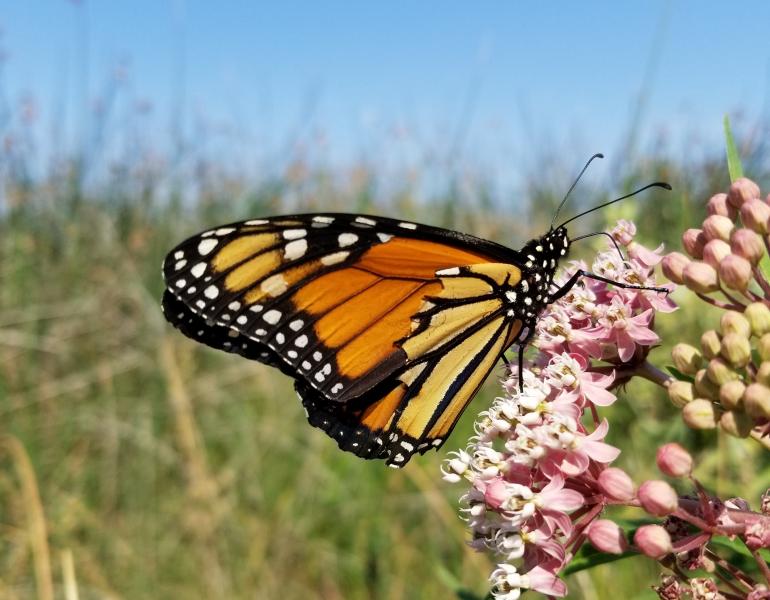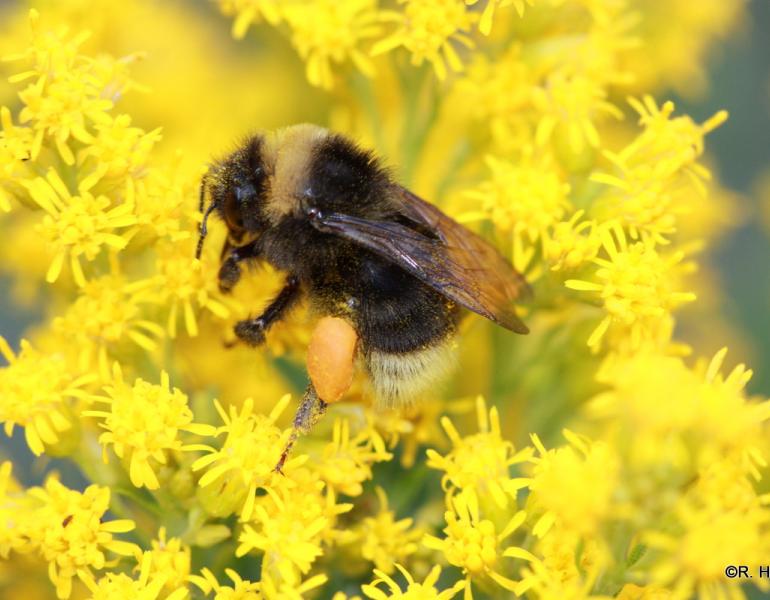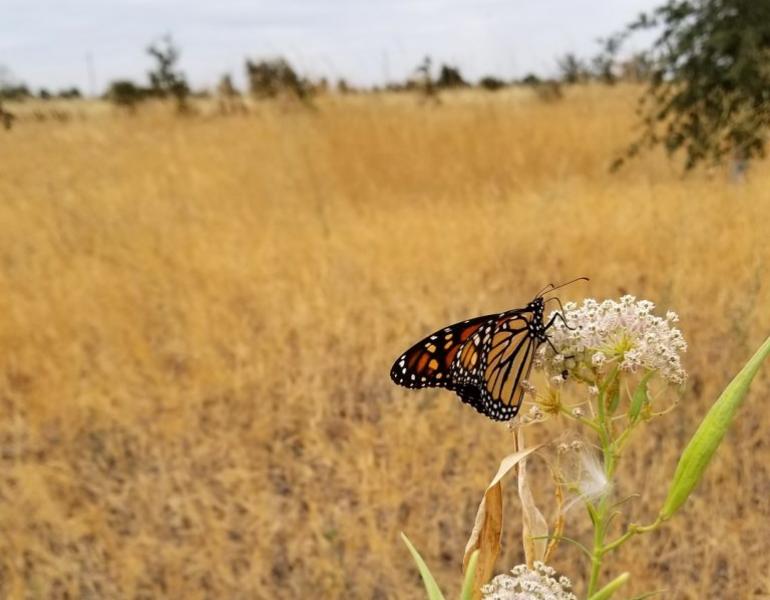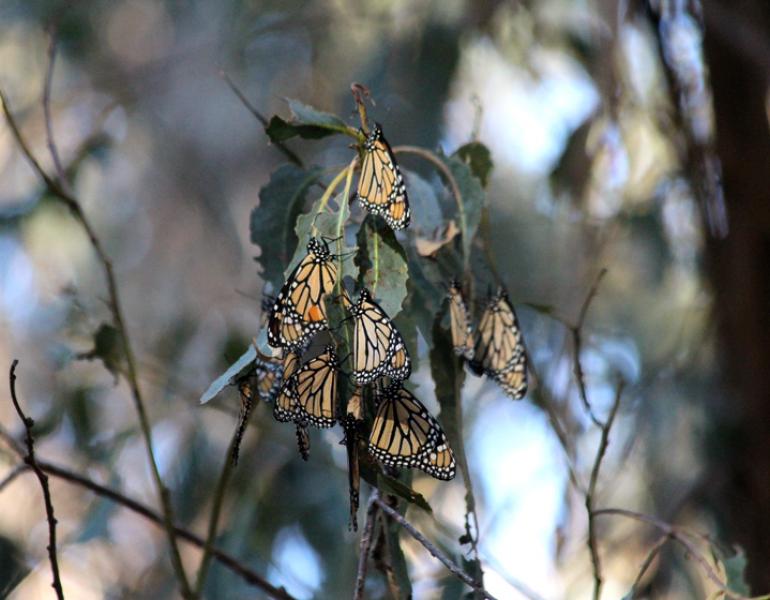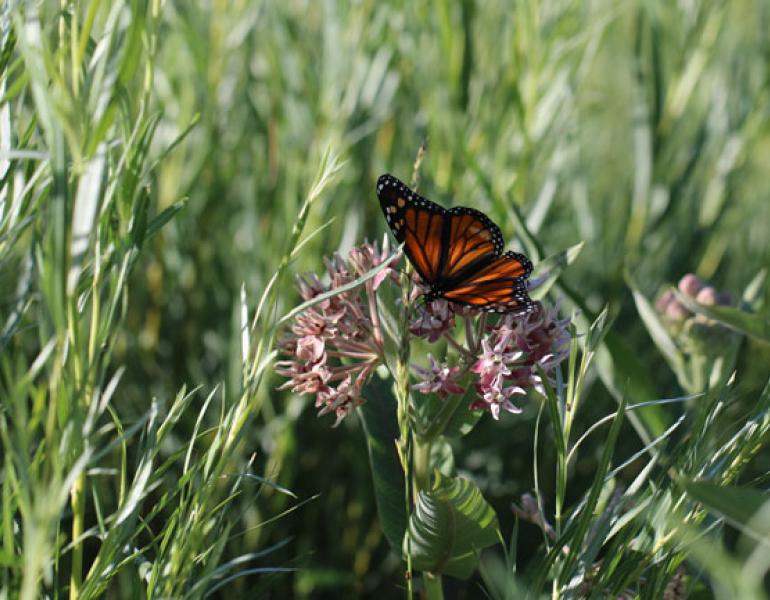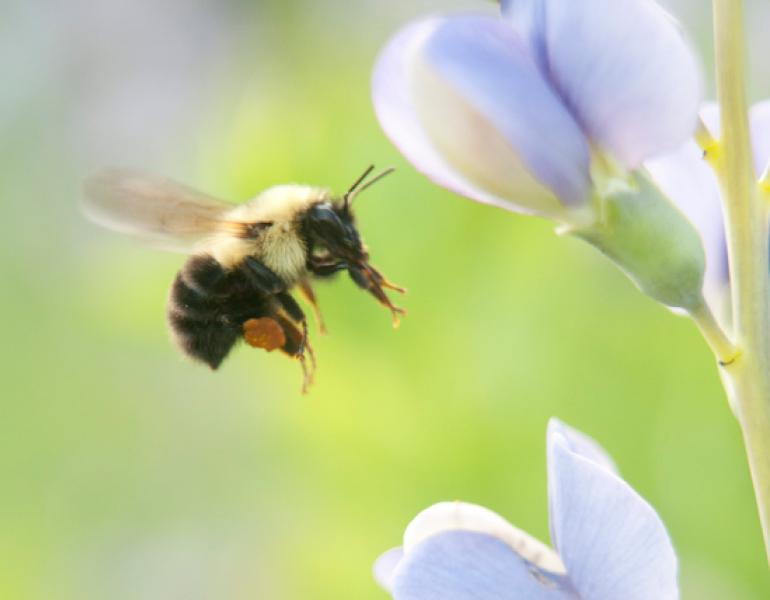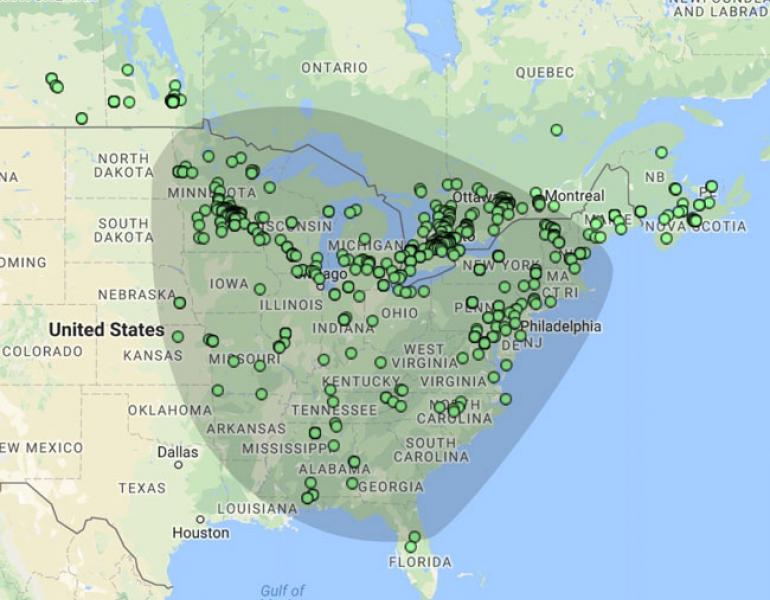Instead of rearing—which is risky and unproven in helping monarchs—we should focus on more effective, science-backed ways to conserve these glorious wild animals.
Community Science
Stronger Together: How To Build Your Conservation Community This Earth Week
Building your community can help us do more for conservation, and lightens the load and keeps us coming back to the causes we care about. Here's how!
5 Monarch Migration Facts
A migrating monarch can travel over 100 miles in a single day! Learn more lesser-known yet fascinating facts about the annual North American monarch butterfly migration.
Exciting Finds from the 2024 Bumble Bee Atlas Field Season
Bumble Bee Atlas and Bumble Bee Watch are vital for filling data gaps and informing future conservation efforts. Today, we are highlighting some of the exciting finds of this summer’s collective efforts!
Celebrating Community Science as the Bumble Bee Atlas Expands to Five New States
With Montana, Colorado, Utah, Nevada, and Wyoming joining, the Bumble Bee Atlas is filling a key region gap that is home to many at-risk species!
Despite a Lower Peak Season, Western Monarchs Start Spring in Higher Numbers than 2023
Migratory western monarchs underwent a 28% seasonal decrease this winter before dispersing from overwintering sites.
Western Monarch Count Tallies 233,394 Butterflies
The overwintering population of western monarchs remains at approximately 5% of its size in the 1980s.
Secrets of the Nevada Nighttime (No, It’s Not Aliens)
Water brings life to the desert—including fireflies. Their secrets lie under the stars, until community scientists discover more.
Midwest Volunteers Map 18,000 Bumble Bees
Traversing the vast grasslands from North Dakota to Kansas, through the glades of Missouri and wetlands of Minnesota, hundreds of community scientists roamed the Midwest last summer in search of bumble bees. And they found them!
What is a Monarch’s Favorite Nectar Plant? Scientists are Seeking Your Observations
Xerces scientists are seeking your observations to learn more about adult monarch nectar plant preferences. Our revised system for this community science opportunity has made it easier than ever to submit data about monarch butterflies and the flowers they are nectaring from.
New Firefly Atlas Will Put Beloved Beetles on the Map
Anyone can join a new community science opportunity, The Firefly Atlas, to study and protect the magic of fireflies. There isn't enough data to even evaluate the status of half of the firefly species in the United States and Canada. The Firefly Atlas aims to collect more and better data, especially in focal regions, to empower conservation action.
Western Monarch Thanksgiving Count tallies nearly 250,000 butterflies
The Xerces Society’s Western Monarch Thanksgiving Count celebrates its 25th year of community science with a surprising and remarkable outcome: 247,237 monarch butterflies observed across western overwintering sites, an over 100-fold increase from last year.
Where do Bumble Bee Queens Overwinter? Participate in Queen Quest This Fall to Help Us Find Out!
While we know a lot about what types of flowers bumble bees like, we know very little about where these new queens go to overwinter. Queen Quest returns this fall in an effort to gain information about where bumble bee queens overwinter. The official blitz date is Saturday, October 16, 2021, but you can search before or after this date.
A Q&A with Daniel Potvin-Leduc, a Bumble Bee Watch Star from Quebec
Victoria MacPhail of York University recently interviewed Daniel Potvin-Leduc, a Bumble Bee Watch star from Quebec, about his experience participating with Bumble Bee Watch.
Using Community Science to Conserve Bumble Bees: From Small Beginnings to a Continent-Wide Effort
As we mark Xerces' 50th year, we look at the ongoing effort to protect bumble bees. Xerces has adopted a multi-pronged approach: outreach and education to raise awareness, technical assistance with habitat restoration, advocacy to gain legal protection, and, the focus of this article, community science to gather data that informs our work.
What Should You Do for Pollinator Week? Go Bumble Bee Watching!
Going bumble bee watching is not only fun, but also a great way to contribute to real conservation science. Why not try it this summer?
Shedding Light on Firefly Natural History and Distributions through Community Science
Gathering habitat and distribution information about lesser-known species is a mammoth task, made easier by the observations submitted by individuals participating in community science projects. You can help, too!
Turning Appreciation into Action Through Community Science
During the month of April, there is a focus on community science projects that can be done right from home. So, the next time you find yourself in an impromptu photoshoot appreciating that magnificent monarch, fuzzy bumble bee, or fabulous milkweed, consider taking it a step further by adding your find to a community science project.
Resident Monarch Populations on the Rise in California: What Does this Mean for the Western Migratory Population?
Many people have been seeing and reporting fairly large numbers of monarchs, both adults and caterpillars, all winter long in gardens on the California Coast this year. Since there haven’t been any formal studies of the number of monarchs breeding during the winter in California in prior years, it is difficult to know if there is in fact an increase this year, or if people are paying more attention and reporting them more often.
Fifth Annual Western Monarch New Year’s Count Confirms Continued Decline in Western Monarch Population
Now in its fifth year, the New Year’s Count has given us a better understanding of: 1) how monarch numbers may decline at overwintering sites as the winter progresses; 2) how monarchs move between and within sites; 3) when they leave sites; and 4) the level of mortality that adult monarchs may be experiencing during the winter.
Pollinator Conservation Program Digest – February 2021
Our pollinator team members provide regular digests on their work. In this bumper edition, three of our staff provide updates. Stephanie Frischie discusses planting seeds, Nancy Lee Adamson highlights monarch conservation in the Southeast, and Emily May introduces a newly released video.
The Power of The Pinery: Six Years of Bumble Bee Community Science at Ontario’s Pinery Provincial Park
Pinery Provincial Park, near the southern tip of Lake Huron in Ontario, has been the site of Wildlife Preservation Canada’s Native Pollinator Initiative since 2015. Volunteers participating in this community science survey program have created a robust long-term dataset by contributing nearly two thousand species-specific bumble bee observations to Bumble Bee Watch.
Monarch Population in California Spirals to Another Record Low
Early count numbers from Xerces’ Western Monarch Thanksgiving Count suggest that the western migratory population is headed for an all-time low. If early data reflects monitoring at the rest of the sites, we may see fewer than 10,000 monarchs overwintering in California this year.
It Takes (More Than) a Village
Xerces Society work to involve community scientists in tracking bumble bees have resulted in many thousands of people submitting nearly 75,000 observations. Together, this sheds light on bumble bee populations, where they are thriving, and on which plants they are foraging -- and informs conservation and protection efforts.
Western Monarch Breeding Season Status
The western monarch breeding season is coming to a close for 2020 and we are in the midst of the fall migration—the time when monarch butterflies are making the long journey back to their overwintering grounds. Following two years during which the western monarch butterfly population hit the lowest levels ever recorded, researchers were looking for signs of a successful breeding season.
Pollinator Conservation Program Digest – September 3, 2020
In this edition of our regular updates from the Pollinator Conservation Program, Jessa Kay Cruz gives a view into work being done with vineyards in California, and Nancy Lee Adamson shares her experience of how community science creates connections between people and nature.
Tracking Butterfly Populations through Community Science
Last year, the Xerces Society partnered with the Cascade-Siskiyou National Monument to launchthe Cascade-Siskiyou Butterfly Monitoring Network. Though the 2020 field season is facing uncertainty, there are still ways for you to get involved with butterfly research where you live.
Nebraska Bumble Bee Atlas: Doing a Little to Impact the Whole
The 2020 survey season begins this June. We hope you’ll join us in our quest to learn more about bumble bees and restore Nebraska’s natural habitats.
Monarchs Overwintering in Mexico Down 53%
This decline makes it clear that monarchs are not recovering and still urgently need Endangered Species Act protection in the United States and extraordinary conservation efforts throughout North America. Learn how to help here.
Five Ways to Support Queen Bumble Bees this Spring
This is a critical time of year because the queen needs sufficient food herself, as well as enough to nourish her first batch of developing offspring. Adding early blooming shrubs and trees to your yard or garden can provide essential resources that will help springboard the colony to health.
New Year’s Count Finds Continued Decline of Monarchs Overwintering in California
Monitoring revealed an average decrease of 46% between the Thanksgiving and New Year’s counts. While the decline is alarming, the silver lining is that this data has provided a concrete list of priority sites to target for conservation efforts.
Evolution in Attitudes Leads to Greater Interest in Pollinator Conservation
Twenty years ago, being referred to as the “bee guy” wasn’t always positive. In contrast, today many people are keen to learn about what they can do to protect pollinators. We are proud to be part of the reason that the public has become more aware of, and engaged in, pollinator conservation.
Thanksgiving Count Shows Western Monarchs Need Our Help More than Ever
The western monarch population remains at a critical level. With some luck and a lot of hard work, we have hope that we can save this incredible migration.
Xerces' Holistic Approach to Conservation
We at the Xerces Society view our work as an interconnected whole rather than as separate parts. To achieve conservation success, we must understand both science and policy. We need to inspire people and at the same time empower them with the tools they require.
Monarch and Pollinator Habitat Kits Designed to Support Imperiled Western Monarchs
These specially designed kits, geared towards large-scale projects, incorporate native milkweeds, nectar plants, and climate considerations.
Hope and Heart: Engaging Volunteers in Conservation
Rachel Dunham, Xerces Society Community Engagement Coordinator, reflects on the pilot year of l Xerces Ambassador program and looks ahead to the program's expansion to new cities.
Ann Puddicombe, a Bumble Bee Watch Star
Ann is among the top ten Bumble Bee Watch submitters in North America. She has also given presentations on bumble bees to community groups, conducted her own independent bumble bee surveys, and advised local groups in creating pollinator habitat.
Still Questing for Bee Nests
Did you beat the odds this year and spot a bumble bee nest? If so, we really want to hear from you for York University’s #Quest4BeeNests research project!
Conserving the Jewels of the Night
Introducing the Xerces Society’s firefly conservation campaign: Conserving the Jewels of the Night.
Western Monarchs: Notes from the Field
Staff from the Xerces Society and our partners have been keeping close eyes on the imperiled western monarch population at study sites in California, Nevada, Oregon, Washington, and Idaho as part of a multi-year collaborative research project.
The Source of Hope and Wonder Comes in Small Packages
Rich Hatfield, senior endangered species conservation biologist and bumble bee lead for the Xerces Society, trekked into Washington state’s Pasayten Wilderness to find the elusive high country bumble bee (Bombus kirbiellus).
Working Together in Iowa to Find the Rusty Patched Bumble Bee
Sarah Nizzi, Farm Bill Pollinator Conservation Planner and NRCS Partner Biologist, writes about a recent workshop in Iowa and a sighting of the endangered rusty patched bumble bee.
Community Science Powers New Western Monarch Studies
Western monarch researchers and community scientists have been busy, contributing information vital to understanding the situation facing this imperiled population.
Celebrate World Firefly Day by Keeping Nights Dark
Fireflies are some of our most well-loved insects—yet their numbers appear to be dwindling. One likely driver for this decline is light pollution. Put simply, fireflies need dark nights.
Working to Conserve Monarchs from Coast to Coast
The Xerces Society is working across the U.S. to conserve this beloved species, and there are a number of ways you can help!
Introducing Xerces’ Newest Community Science Project: Nebraska Bumble Bee Atlas
Work alongside researchers to collect data and support bumble bee conservation.
New iNaturalist Project Makes it Easier to Submit Data to the Western Monarch Milkweed Mapper
We need all hands on deck this season, to better understand the hurdles facing the imperiled western monarch population!
5 Ways Wildlife Preservation Canada’s Bumble Bee Recovery & Conservation Initiatives Benefit from Bumble Bee Watch
Wildlife Preservation Canada’s efforts to conserve native bumble bees would be nothing without help from our volunteer community scientists across the country, and without Bumble Bee Watch.
How to Support Monarch Butterfly Conservation—During Earth Week and Beyond!
Helping the monarch back to full health isn’t going to be easy or quick, but together we can transform the landscape to allow the monarch to rebound—and give our children the gift of watching orange wings flap in the sunshine.
Honoring Robbin Thorp, a Legendary Figure in North American Bee Conservation
Robbin Thorp, Professor Emeritus at University of California–Davis, has made lasting contributions to the bee conservation community in ways that might never be measured, but will certainly be felt.
Community Scientists Take on the Cultivar Conundrum
The Xerces Society’s blog post “Picking Plants for Pollinators: The Cultivar Conundrum” highlighted the lack of research on this topic. To help address this knowledge gap, Budburst launched the Nativars research project in 2018.
A Quest for Bumble Bee Nests: The Missing Link
Researchers at York University are recruiting members from across North America for a very important mission. Your assignment, should you choose to accept it: find and submit sightings of bumble bee nests.
Community Scientists Can Help Support Imperiled Western Monarchs
While hiking in California and the rest of the West, you can help researchers by submitting any and all monarch and milkweed observations this year to the Western Monarch Milkweed Mapper website.
New Year’s Count of Western Monarchs Confirms Decline, Trends Seen in Previous Years
Overall, the count data revealed an average decrease of 38% between the Thanksgiving and New Year’s counts.
Record Low Number of Overwintering Monarch Butterflies in California—They Need Your Help!
We urge you to join us and our colleagues in the western monarch science and conservation community in taking meaningful, swift action to help save western monarchs.
Pollinator Conservation Program Digest – November 2018
November’s featured staff hail from Minnesota, Indiana, and California, and have been conducting training and outreach events, helping General Mills to implement their plan to plant 3,300 acres of pollinator habitat, and monitoring farm habitat plantings in the San Joaquin Valley.
Early Thanksgiving Counts Show a Critically Low Monarch Population in California
The California overwintering population has been reduced to less than 0.5% of its historical size, and has declined by 86% compared to 2017.
Western Monarch Numbers Expected to Be Low this Year
What can you do to help the monarch? Protect habitat, avoid pesticide use, plant gardens, and contribute data to Xerces-led community science efforts.
Kicking Off Canadian Bumble Bee Watch Training Events!
During this year's Pollinator Week (June 18 to 24) multiple locations in Ontario and Alberta were buzzing with activity, including an assortment of Bumble Bee Watch community-science training events led by Wildlife Preservation Canada.
Surprising Results from a Survey of Bumble Bee Watch Users
This past February, Bumble Bee Watch users were invited to take a survey run by York University researchers to learn more about participant demographics, motives, and confidence with bumble bee identification.
Managing for Monarchs in the West
A new guide to protecting the monarch butterfly from the Pacific to the Rockies presents a holistic approach to monarch conservation.
10 Ways to Celebrate Earth Day
Here are some ways you can work to promote a healthy planet for invertebrates and the people they let share their planet.
Unblinded by Science
As the anniversary of the March for Science approaches, we reflect on ways science has informed our conservation efforts over the past year.
Second New Year's Count Supports Monarchs' Movement Between Sites
The Xerces Society's Western Monarch Thanksgiving Count provides a long-running record of the number of monarchs overwintering in California-including the steep decline of recent decades.
Very Low Numbers of Monarchs Overwintering in California may Reflect an Unusual Fall
Unusual fall weather may have contributed to the lowest overwintering western monarch population recorded since 2012.
Wildlife Preservation Canada Continues Training “Bumble Bee Watchers”
Begun in 2015 at one location in Ontario, Wildlife Preservation Canada has expanded Bumble Bee Watch citizen science training programs to multiple locations across Canada. The programs are held in areas with historical observations of at-risk species.
Community Science Data Aids in Expert Testimony on Regulation of Commercially Bred Bumble Bees
Observations from Bumble Bee Watch show the common eastern bumble bee (Bombus impatiens) far outside of its native range.
Observations by Community Scientists Expand Known Range of the Two-Spotted Bumble Bee
Contributions to the community science program Bumble Bee Watch are expanding our understanding of where species have been - and potentially where they are going.
Science: Something Worth Marching For
Science underpins all that we do. That's why we're proud to be partners in the 2017 March for Science.
Western Monarch Conservation: A 40 Year History
For 40 years, the monarch migration phenomena has been recognized as a conservation priority.
ID Dragonflies and Locate Hotspots with the Dragonfly ID App!
Calling all nature enthusiasts! Do you have a smartphone and want to use it to explore, identify, and marvel at the diversity of dragonfly and damselfly fauna in your backyard, local wetland, or favorite trout stream? Well, now you can!


